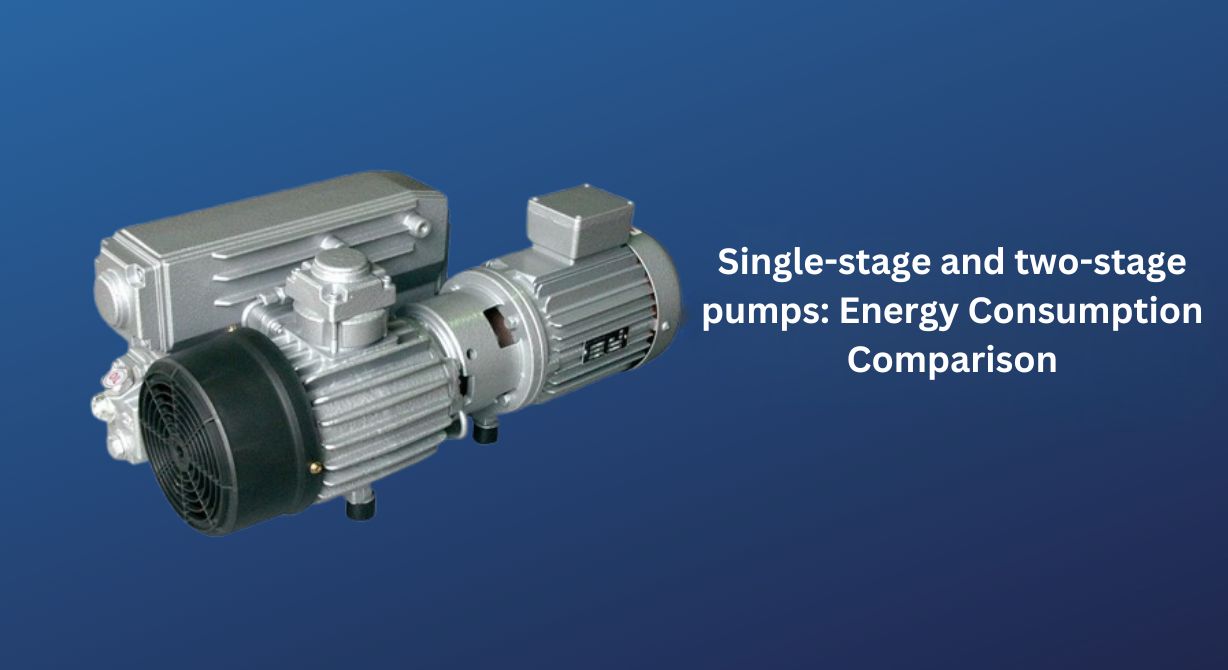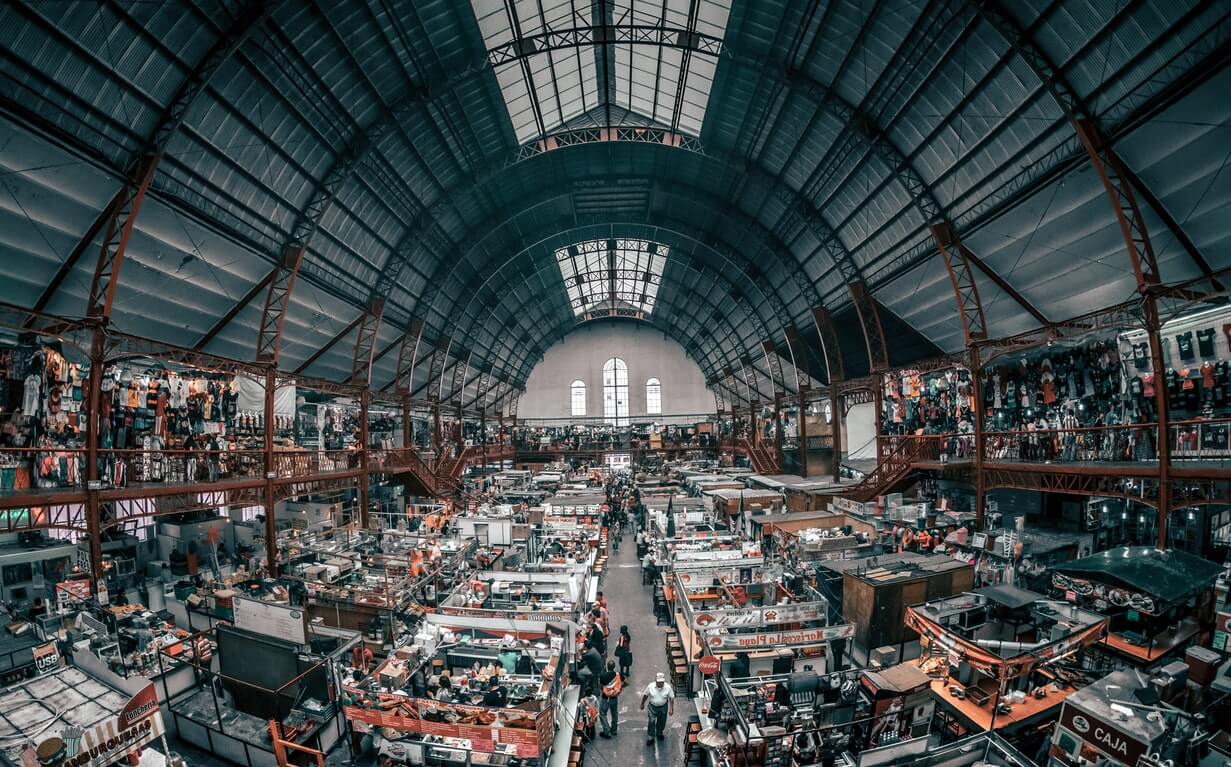Performance Enhancement with Two Stage Vacuum Pumps
Table of Contents
- How Do Two-Stage Vacuum Pumps Achieve Deeper Vacuum Levels for Critical Processes?
- A Practical Guide to Enhancing Process Efficiency and Yield with Two-Stage Vacuum Technology
- Key Advantages of Using a Two-Stage Pump for High-Vacuum Industrial Applications
- Rotary Vane vs. Two-Stage Pumps: Selecting the Right Vacuum Solution for Your Deep Vacuum Needs
- Troubleshooting Common Challenges in Deep Vacuum Processes with Two-Stage Pump Systems
- What Are the Essential Maintenance Steps to Ensure Peak Performance from Your Two-Stage Vacuum Pump?
How Do Two-Stage Vacuum Pumps Achieve Deeper Vacuum Levels for Critical Processes?
The pursuit of deeper vacuum levels is a fundamental requirement in numerous critical industrial processes, from semiconductor manufacturing to chemical vapor deposition. Achieving these low-pressure environments reliably and efficiently is the primary function of a two-stage vacuum pump. Unlike single-stage pumps, which have a practical ultimate pressure limitation, two-stage designs overcome this barrier through a sequential compression process.
In a two-stage pump, the first stage acts as a roughing pump, initially evacuating the chamber to an intermediate pressure. The partially compressed gas is then directed not to the exhaust but into the inlet of a second, smaller stage. This second stage further compresses the gas, achieving a significantly lower base pressure. This architecture effectively multiplies the compression ratio, allowing the system to remove a greater volume of gas molecules and reach a deeper vacuum. This enhanced performance is critical for processes where even trace contaminants can compromise product integrity.
The engineering superiority of a two-stage system directly translates to operational benefits. By achieving the target vacuum level faster and more consistently, these pumps improve overall process efficiency and throughput. Furthermore, the design often leads to smoother operation and reduced vibration levels, which is essential for sensitive applications like electron microscopy or precision coating. The robust construction of Gücüm Pompa's two-stage pumps ensures high contamination tolerance, handling process vapors and particulates more effectively than simpler pumps, thereby increasing mean time between failures (MTBF).
For commercial decision-makers, the investment in a two-stage vacuum pump from Gücüm Pompa is justified by its impact on total cost of ownership. The enhanced reliability and durability reduce unplanned downtime and maintenance costs, while the improved energy efficiency lowers operational expenses. This combination of technical performance and economic advantage makes the two-stage pump an indispensable asset for any operation where vacuum integrity is non-negotiable. Gücüm Pompa's expertise ensures that these systems are optimized for the most demanding industrial applications.
A Practical Guide to Enhancing Process Efficiency and Yield with Two-Stage Vacuum Technology
The pursuit of superior process efficiency in industrial applications often hinges on the quality of the vacuum environment. Single-stage vacuum pumps, while adequate for basic duties, frequently fall short in demanding scenarios where both high vacuum levels and substantial gas throughput are required. This is where the engineering superiority of two-stage vacuum technology becomes a critical asset, fundamentally enhancing system performance and product yield.
At its core, a two-stage design operates by cascading two pumping mechanisms in series. The first stage, a larger pump, handles the bulk gas load at a lower vacuum, pre-treating the environment for the second stage. This secondary stage then acts on the pre-conditioned gas, achieving a much deeper and more stable final vacuum level. This sequential action is far more energy-efficient than forcing a single stage to perform the entire compression cycle, leading to significant reductions in energy consumption and operational costs.
The practical benefits are substantial across various sectors. In chemical processing, the stable vacuum prevents product degradation and ensures consistent reaction kinetics, directly improving yield optimization. For drying processes, the enhanced moisture removal capabilities of a two-stage system drastically reduce cycle times. The robust design of Gücüm Pompa's two-stage vacuum pumps ensures exceptional operational reliability, minimizing unplanned downtime and maintenance intervals, which is a primary concern for continuous production lines.
From a commercial perspective, the investment in advanced vacuum technology must be justified by a clear return on investment. The combined effect of higher throughput, reduced energy costs, improved product quality, and lower maintenance creates a compelling financial case. Gücüm Pompa engineers its systems with a focus on achieving the lowest total cost of ownership, making them a strategic choice for long-term operational planning.
Implementing this technology requires careful consideration of the specific process parameters, including required vacuum depth, gas load, and the presence of condensables or particulates. A thorough technical specification review is essential to select the optimal pump model and configuration. Proper integration ensures that the system operates at its peak performance metrics, delivering the promised gains in efficiency and reliability that modern industrial operations demand.
Key Advantages of Using a Two-Stage Pump for High-Vacuum Industrial Applications
The pursuit of efficient and reliable high-vacuum generation is a critical engineering challenge across numerous industries, from semiconductor manufacturing to chemical processing. In this context, the two-stage rotary vane pump represents a significant advancement over single-stage designs, offering superior performance characteristics essential for demanding applications. The fundamental advantage lies in its sequential compression mechanism, where two vacuum stages operate in series to achieve a much deeper final ultimate pressure.
By dividing the workload, a two-stage pump achieves a lower base pressure, often by an order of magnitude, compared to a single-stage equivalent. This enhanced vacuum performance is crucial for processes requiring extremely clean environments, such as thin-film coating or analytical instrumentation, where even trace gases can compromise results. Furthermore, this design significantly improves pump-down time, allowing systems to reach their operational setpoint faster, which directly translates to higher throughput and reduced cycle times in production settings.
Operational efficiency and energy consumption are paramount concerns for commercial decision-makers. The two-stage architecture contributes to better energy efficiency by reducing the power required to maintain a deep vacuum, as the second stage handles a much smaller volume of gas already pre-compressed by the first stage. This leads to lower operating costs and a reduced carbon footprint over the pump's lifecycle. Gücüm Pompa engineers its two-stage pumps with a focus on this holistic efficiency, ensuring long-term reliability.
From a maintenance perspective, the two-stage design offers enhanced robustness. The load is distributed across two stages, reducing stress on individual components and minimizing wear. This results in longer service intervals and greater operational stability, especially when handling condensable vapors or during continuous operation. The ability to handle a higher water vapor tolerance is another key benefit, as the staged compression reduces the risk of internal condensation, a common cause of oil contamination and pump failure in single-stage units.
In applications like vacuum furnaces, freeze dryers, and electron microscopy, the consistent and deep vacuum provided by a Gücüm Pompa two-stage pump ensures process integrity and product quality. The technology represents a smart investment, balancing superior technical performance with compelling economic advantages through reduced energy use and enhanced durability. For engineers specifying equipment for critical high-vacuum systems, the two-stage pump is often the optimal solution for achieving both performance and reliability targets.
Rotary Vane vs. Two-Stage Pumps: Selecting the Right Vacuum Solution for Your Deep Vacuum Needs
The selection of an optimal vacuum pump is a critical engineering decision that directly impacts process efficiency, operational cost, and system reliability. For applications requiring a deep vacuum, typically in the range of 10-3 to 10-2 mbar, the debate often centers on the fundamental choice between robust rotary vane pumps and advanced two-stage pumps. Each technology offers a distinct set of performance characteristics suited to specific industrial environments.
Single-stage rotary vane pumps are renowned for their durability and high displacement volume, making them ideal for bulk gas removal and rough vacuum applications. However, when the process demands a deep vacuum, the two-stage pumps from Gücüm Pompa provide a superior solution. By employing two sets of vanes and chambers in series, these pumps achieve significantly lower ultimate pressure and enhanced pumping speed in the critical low-pressure regime.
A key advantage of the two-stage design is its improved handling of vapor tolerance. Processes involving solvents or moisture can lead to condensate formation within the pump oil, a common issue for single-stage units that degrades performance and necessitates frequent maintenance. The two-stage configuration mitigates this by allowing the first stage to handle the bulk of the vapor load, protecting the second stage that is responsible for achieving the final deep vacuum. This results in cleaner oil, longer service intervals, and greater process stability.
For commercial decision-makers, the choice translates into total cost of ownership. While the initial investment in a Gücüm Pompa two-stage pump may be higher, the long-term benefits are substantial. Reduced maintenance cycles and lower oil consumption directly decrease operational expenditures. Furthermore, the consistent performance and reliability of these pumps ensure minimal unplanned downtime in critical applications such as vacuum furnaces, analytical instrumentation, and complex industrial systems where process integrity is paramount.
The selection hinges on the specific vacuum requirements. For applications where rapid pump-down to a stable, low-pressure environment is essential, the engineered superiority of a Gücüm Pompa two-stage vacuum pump is undeniable. Its enhanced vapor tolerance and ability to reliably maintain a low ultimate pressure make it the technically and commercially sound choice for demanding industrial and environmental applications.

Troubleshooting Common Challenges in Deep Vacuum Processes with Two-Stage Pump Systems
Achieving and maintaining a deep vacuum is critical for numerous industrial processes, from chemical vapor deposition to vacuum distillation, where even minor deviations can compromise product quality and yield. Two-stage rotary vane pump systems are the workhorses for these applications, but their performance is susceptible to specific operational challenges that require diligent troubleshooting.
One of the most frequent issues is the inability to reach the target base pressure. This often stems from internal or external system leaks, which introduce unwanted gas load. A systematic leak-checking procedure using a helium mass spectrometer is essential. However, internal sources like contaminated vacuum pump oil can be equally detrimental. The oil's vital roles in sealing and cooling are compromised by moisture absorption or process solvent contamination, significantly increasing its vapor pressure and limiting ultimate vacuum.
Contamination management is a core aspect of reliable operation. Processes involving condensable vapors can lead to oil emulsification and chemical attack on internal components. This is where features like gas ballast become indispensable. By introducing a controlled amount of air into the compression chamber, gas ballast helps expel condensables before they can liquefy, preserving oil integrity. For more aggressive chemistries, specialized pump protection systems, including advanced filtration and cold traps, are necessary to prevent corrosion and premature wear.
Beyond contamination, mechanical health is paramount. An unexpected rise in operating temperature or unusual acoustic noise can indicate problems with the rotary vane mechanism, such as worn vanes or bearing issues. Regular monitoring of these parameters provides early warning signs, allowing for proactive maintenance before a catastrophic failure causes costly downtime. Implementing a scheduled maintenance regimen based on runtime and process conditions is a best practice for maximizing mean time between failures (MTBF).
For engineers and managers, selecting a robust partner like Gücüm Pompa is a strategic decision. Their two-stage systems are engineered with these challenges in mind, featuring durable construction, accessible service points, and compatibility with a range of protection accessories. This focus on reliability and ease of maintenance directly translates to higher process uptime, consistent product quality, and a lower total cost of ownership, making the investment in a superior vacuum solution commercially astute.
What Are the Essential Maintenance Steps to Ensure Peak Performance from Your Two-Stage Vacuum Pump?
The operational integrity of a two-stage vacuum pump is a critical factor in industrial processes where consistent vacuum pressure is non-negotiable. Ensuring peak performance requires a disciplined maintenance regimen that directly impacts mean time between failures and total cost of ownership. The first and most fundamental step is the regular monitoring and changing of the vacuum pump oil. In a two-stage system, oil acts as both a lubricant and a sealant; contaminated oil increases wear and degrades the ultimate vacuum level, leading to process variability and increased energy consumption.
Concurrent with oil management, a rigorous preventive maintenance schedule must include inspecting and replacing inlet filters. A clogged filter forces the pump to work harder, elevating operating temperatures and accelerating the degradation of internal components. For pumps like those from Gücüm Pompa, which are engineered for demanding applications, this simple check preserves the designed performance specifications. Furthermore, periodic checks of the gas ballast valve are essential, especially in applications prone to condensable vapors, as this feature helps purge contaminants from the oil, maintaining its sealing properties and chemical stability.
A comprehensive maintenance protocol extends to checking for leaks in the entire vacuum system and ensuring all connections are tight. External leaks compromise the system's ability to reach target pressure, while internal leaks between stages can indicate worn vanes or seals. Listening for unusual noises and monitoring the pump's temperature and vibration levels can provide early warning signs of impending issues, allowing for intervention before a catastrophic failure occurs. This proactive approach to condition monitoring is a cornerstone of reliable operation.
Ultimately, adhering to a structured maintenance plan for your Gücüm Pompa unit is not merely about repair avoidance; it is an investment in process reliability and product quality. Properly maintained pumps exhibit superior energy efficiency, reduced downtime, and a longer operational lifespan. This disciplined approach ensures that the capital investment in high-performance vacuum technology delivers maximum return by safeguarding critical industrial processes in sectors such as pharmaceuticals, chemical processing, and packaging from unexpected disruptions.

